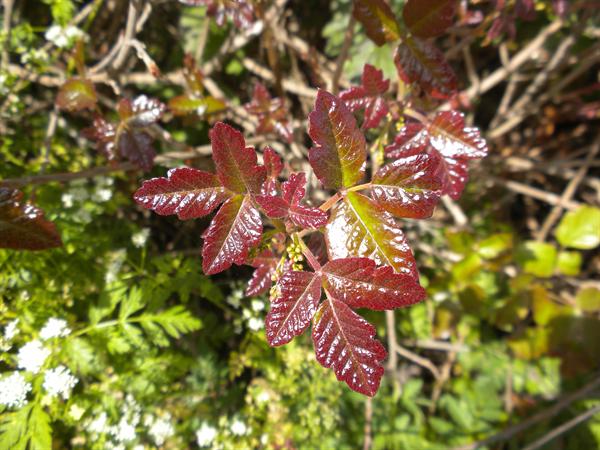Deactivation Of Urushiol (From Poison Oak/Ivy) To Prevent Contact Dermatitis
Technology Description
Urushiol is an oily organic allergen found in plants of the genus Toxicodendron (including poison ivy, poison oak, and poison sumac), other plants in the family Anacardiaceae (mango, Rengas tree, Burmese lacquer tree, India marking nut tree, and the shell of the cashew nut), and unrelated plants such as Ginkgo biloba. Urushiol is primarily found in the spaces between plant cells beneath the outer skin of the plant. It causes an allergic skin rash on contact known as urushiol-induced contact dermatitis.
Urushiol-induced contact dermatitis is contracted by contact with a plant or any other object containing urushiol oil. The oil adheres to almost anything with which it comes in contact, such as towels, blankets and even clothing. Clothing or other materials that contact the plant and then, contact the skin are common causes of exposure. Symptoms of the rash include itching, inflammation, oozing, and in often a burning sensation. The American Academy of Dermatology estimates there are up to 50 million cases of urushiol-induced dermatitis annually in the United States alone, accounting for 10% of all lost-time injuries in the United States Forest Service.

Image 1: Toxicodendron diversilobum (Western poison oak), one of a large number of species containing urushiol irritants.
Researchers at University of California, Santa Cruz have discovered methods of detecting the antigenic and/or allergenic compounds that induce contact dermatitis. This is done by spraying an object suspected of contamination with urushiol, followed by illumination with a fluorescent lamp. This methodology constitutes the groundwork for the future development of a spray to detect urushiol to avoid contact dermatitis, as well as to detect catecholamines for biomedical applications.
Applications
A lot of exposure to Poison Ivy or Poison Oak occurs in campers, fishermen, forest rangers, scouts, firefighters, policemen, etc. but in addition to that, a lot of people come in contact with Urushiol without even being aware of it. Urushiol is also present in mango peel, Burmese lacquer tree, India marking nut tree, and the shell of the cashew nut and any exposure to these might not be noticed until the onset of contact dermatitis. This method of detection of Urushiol, is a great preventative measure and could be applied in the form of a spray to any surface with a potential of contact or exposure to Urushiol and thereby help in it’s detection.
Advantages
It is usually impossible to detect exposure to poison oak/ivy in the early stages and the contact dermatitis does not show symptoms until almost 5 days from exposure and by then it is too late to take preventative measure. With this detection mechanism, Urushiol can be detected not only in the environment but also on any surface that has been in contact almost immediately. Its presence can be determined not only on the plants where it is growing but also on clothes, skin, shoes, camping gear, pet fur, vehicles, etc. allowing to take precaution before the onset of the allergic reaction.
Intellectual Property Information
| Country | Type | Number | Dated | Case |
| United States Of America | Issued Patent | 9,896,532 | 02/20/2018 | 2010-259 |
Contact
- University of California, Santa Cruz Industry Alliances & Technology Commercialization
- innovation@ucsc.edu
- tel: View Phone Number.
Other Information
Keywords
Allergens, Urushiol, Urushiol Detection, Contact Dermatitis
